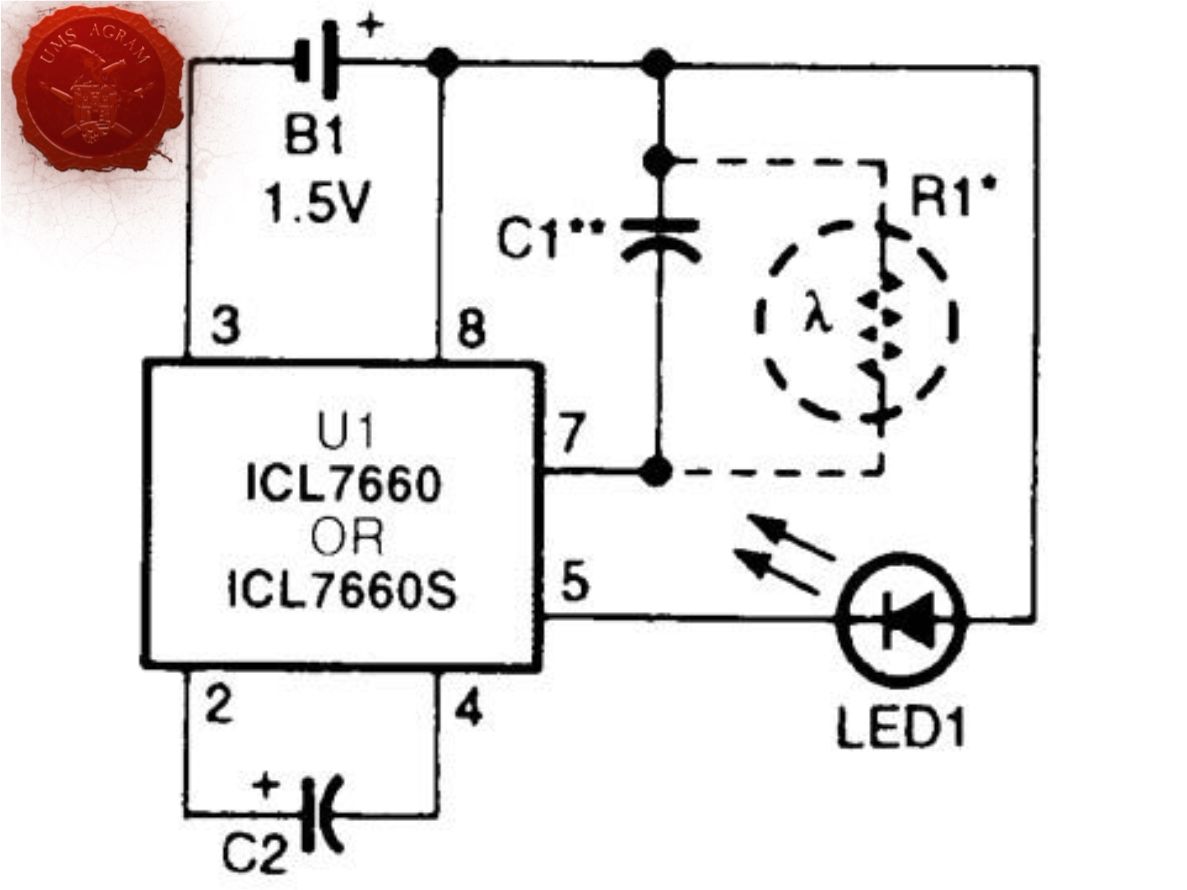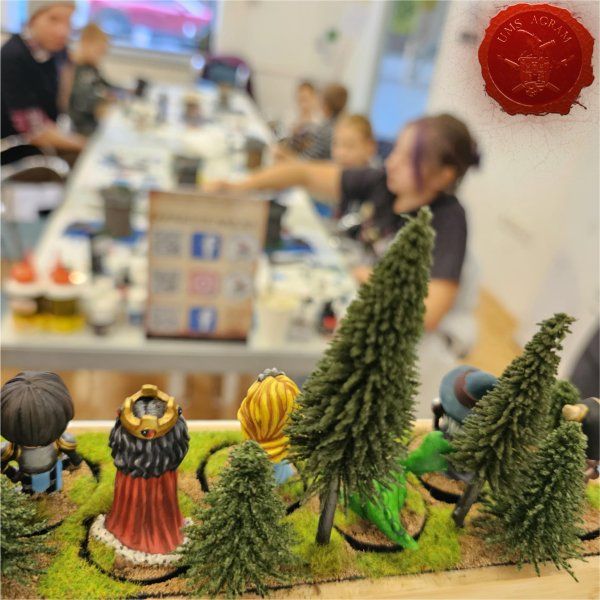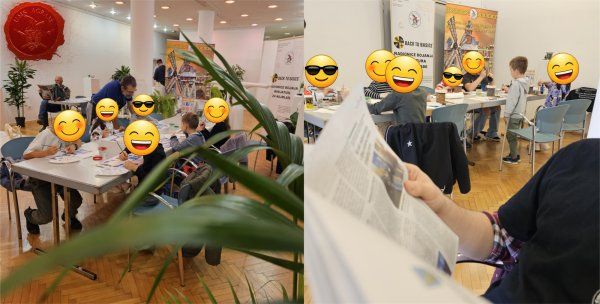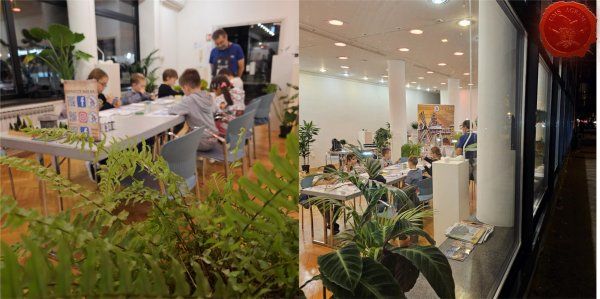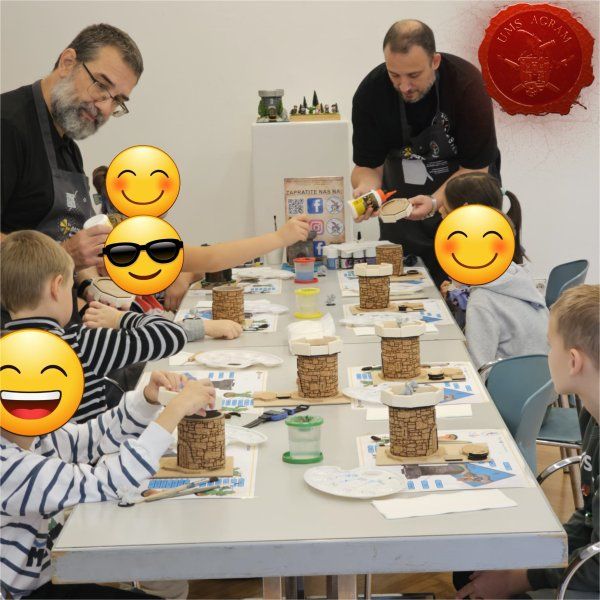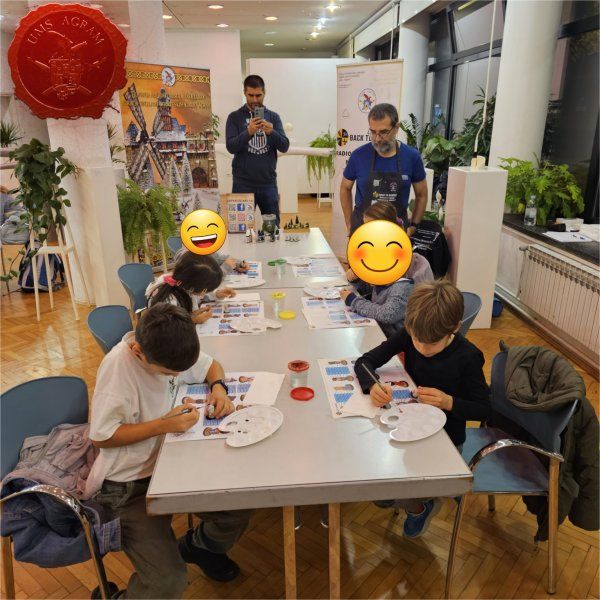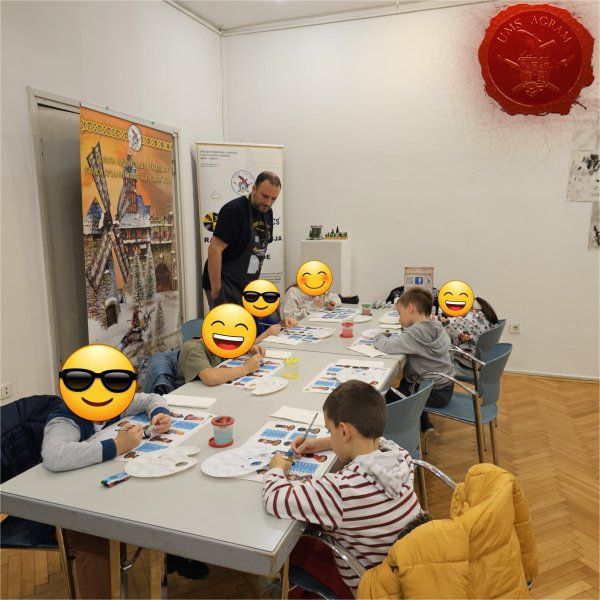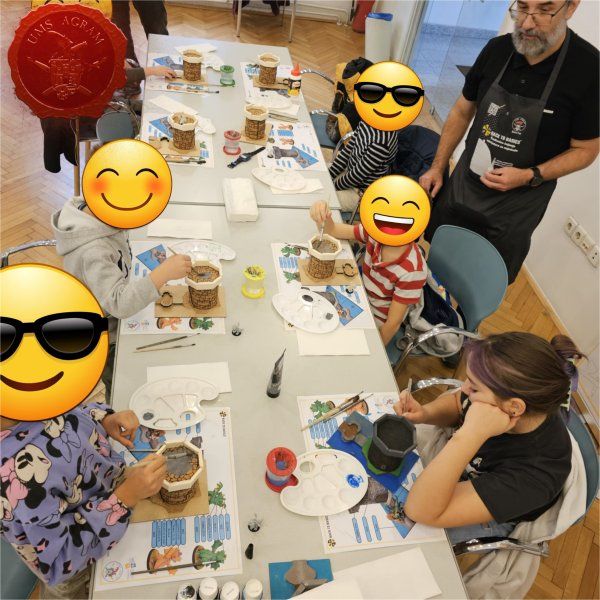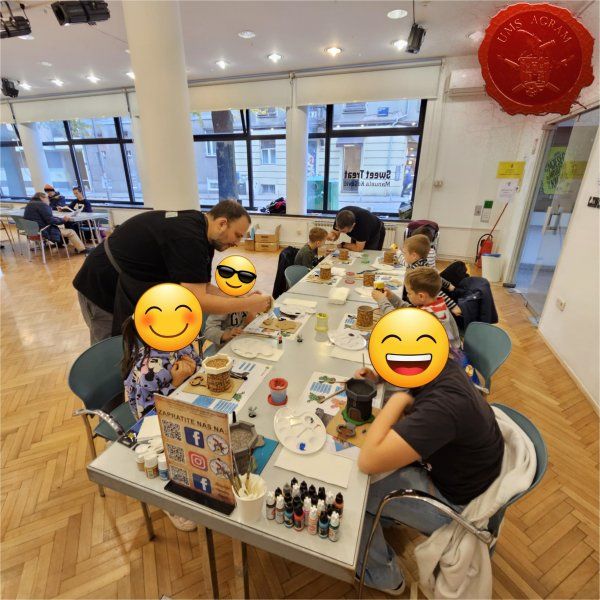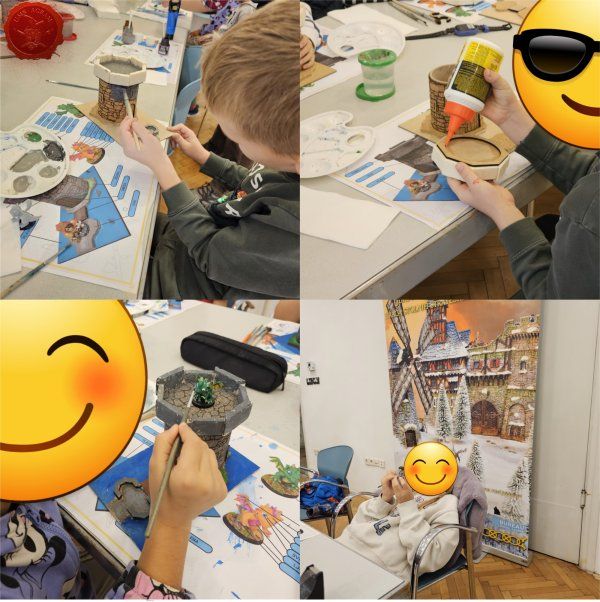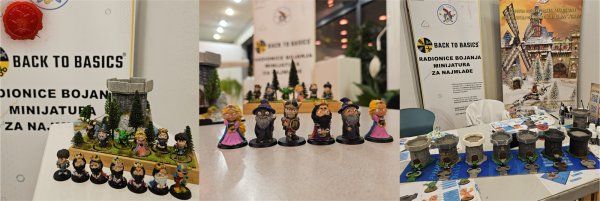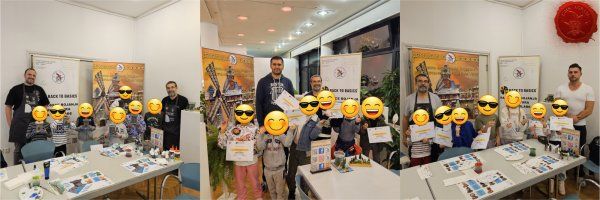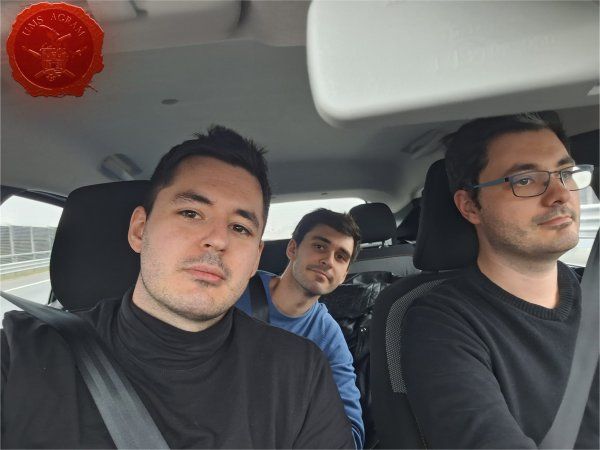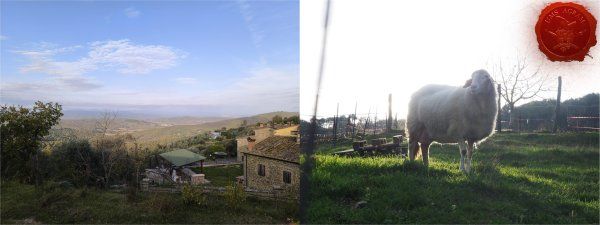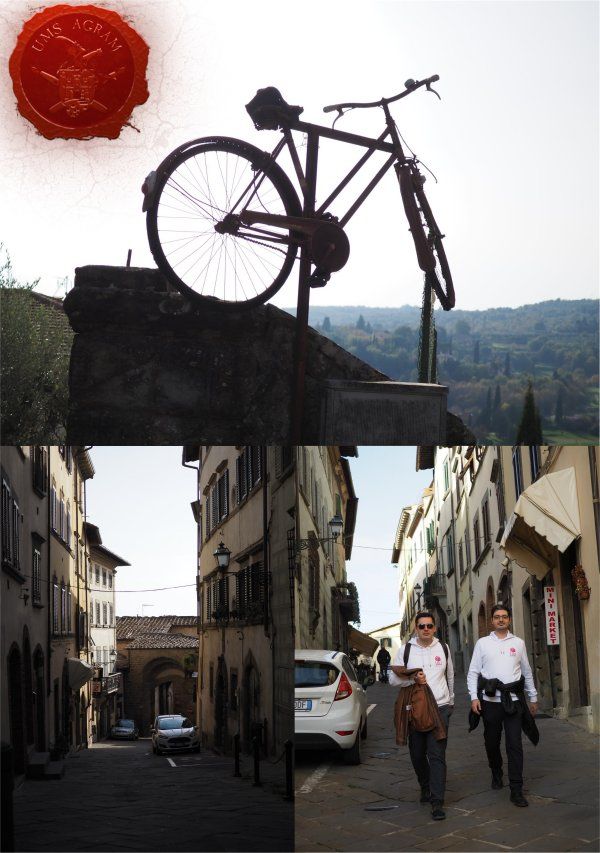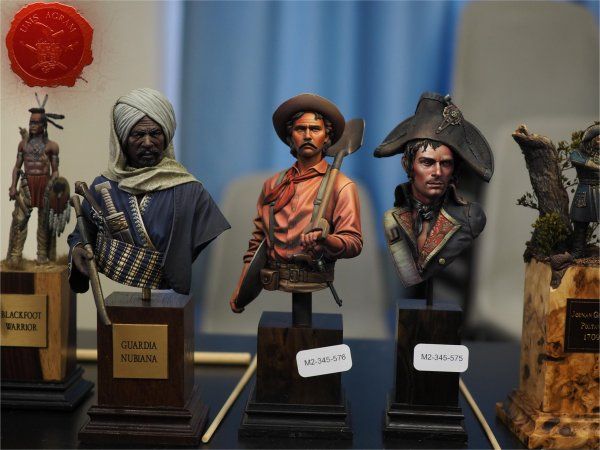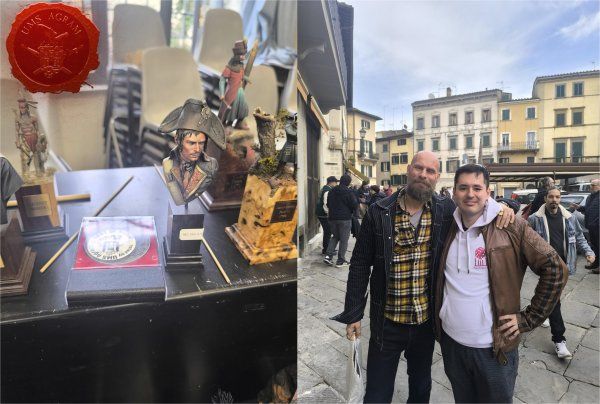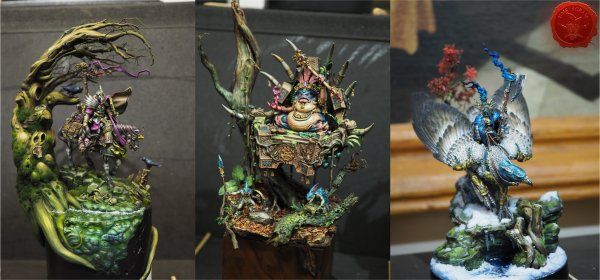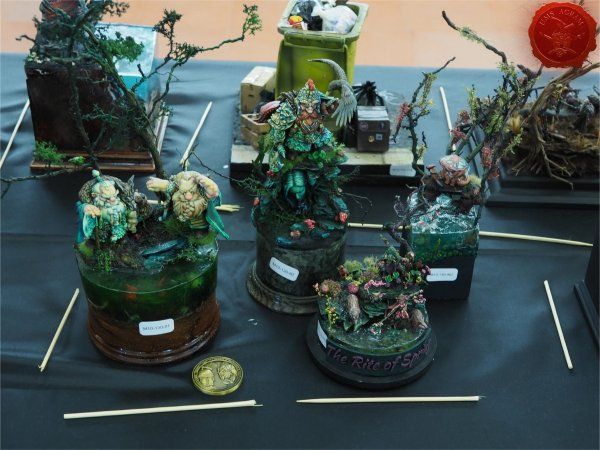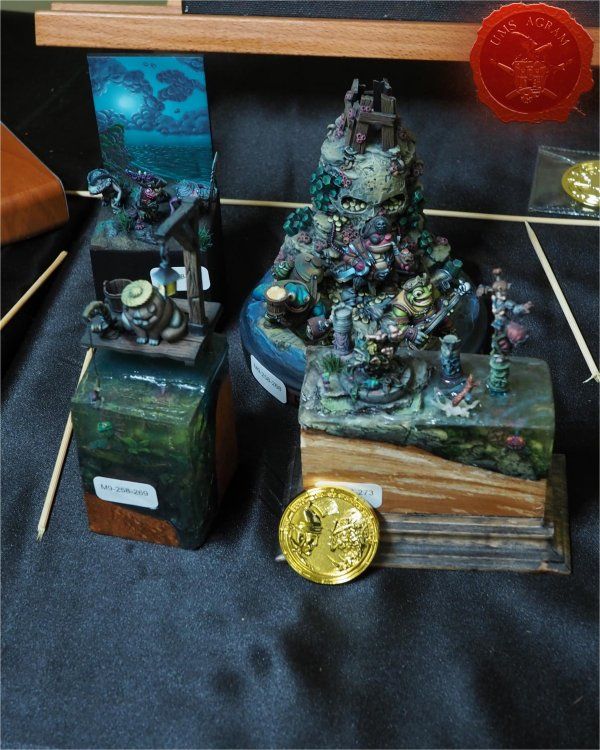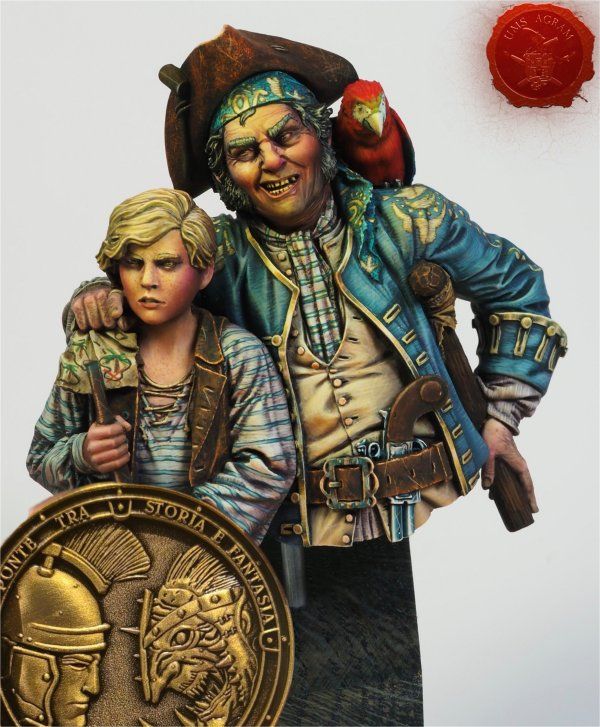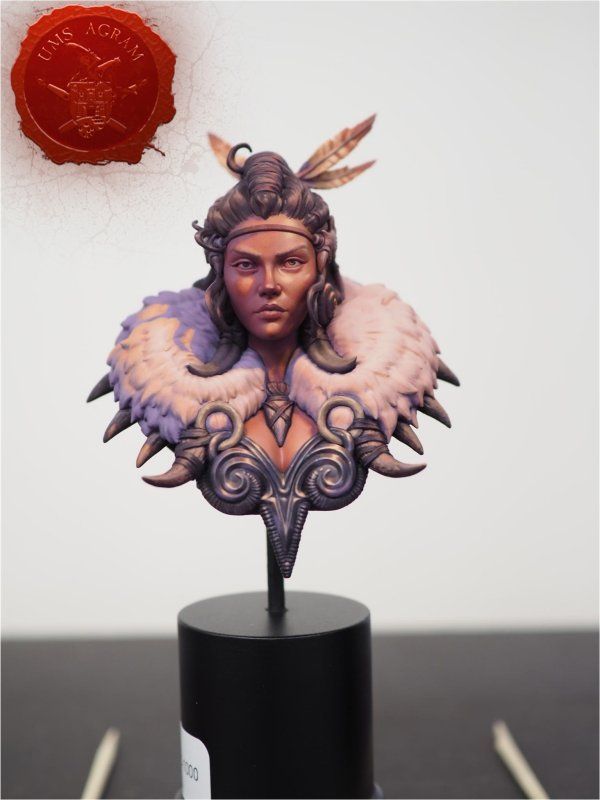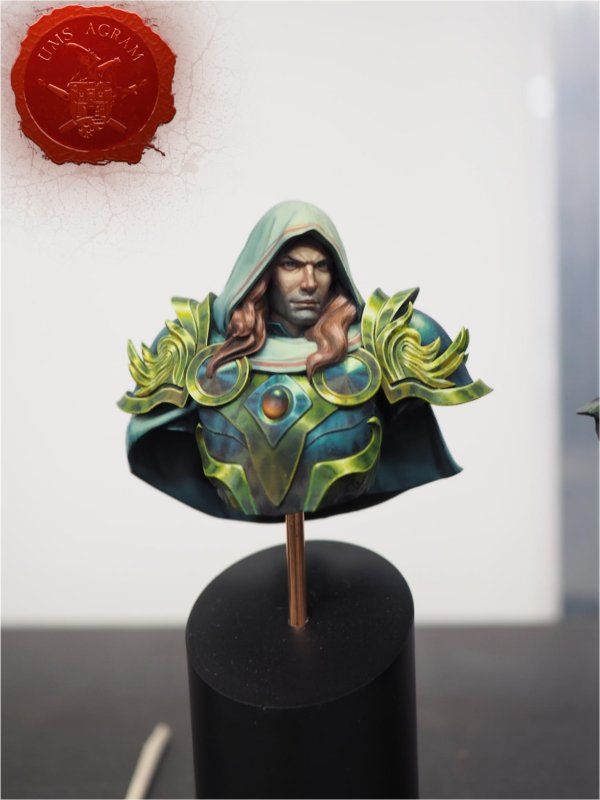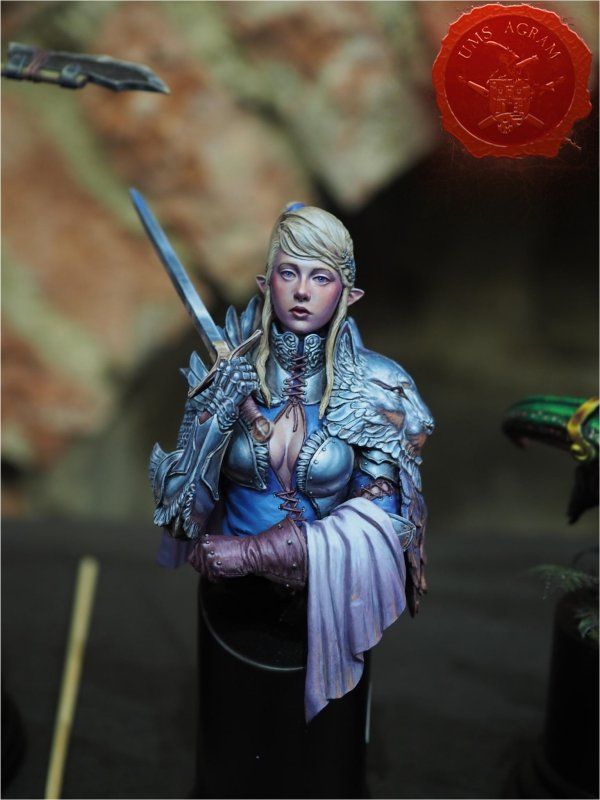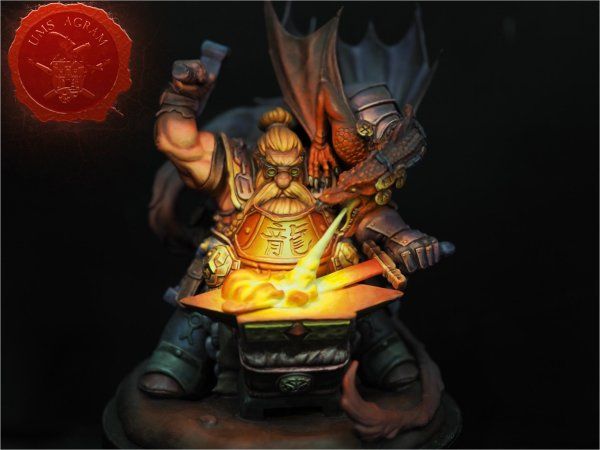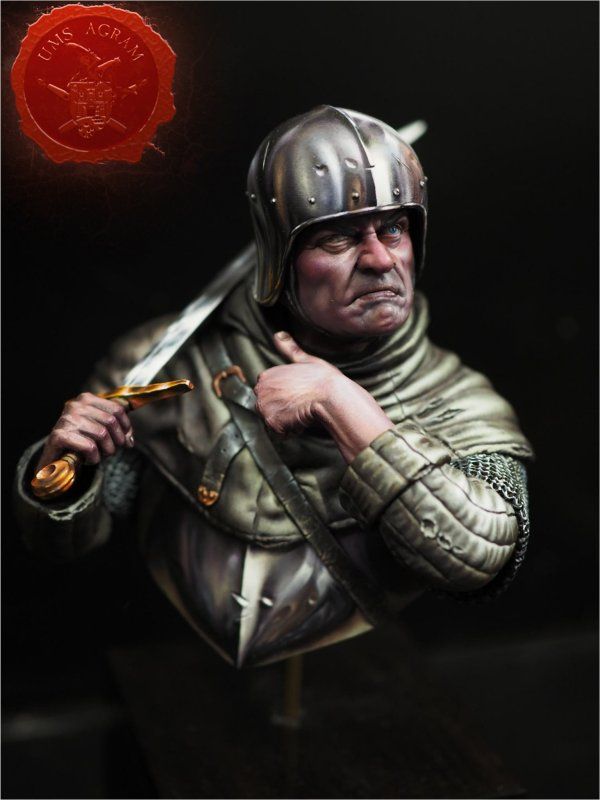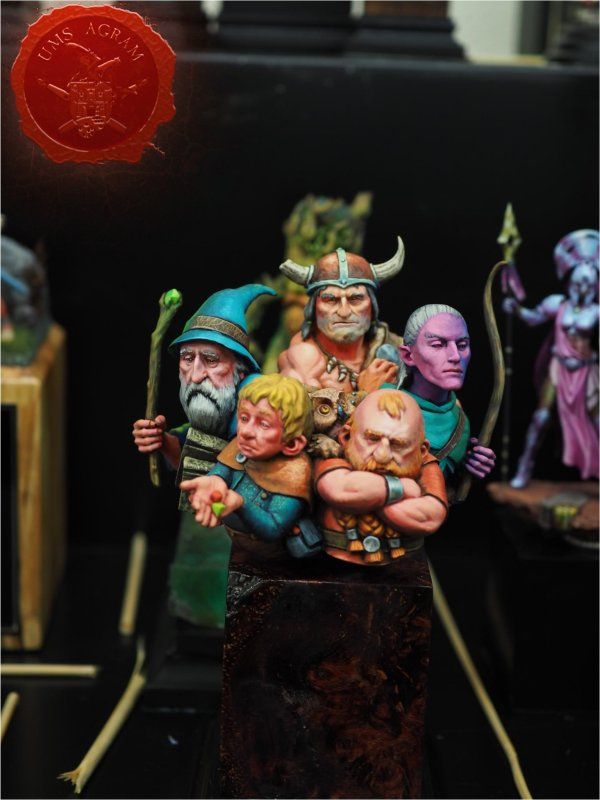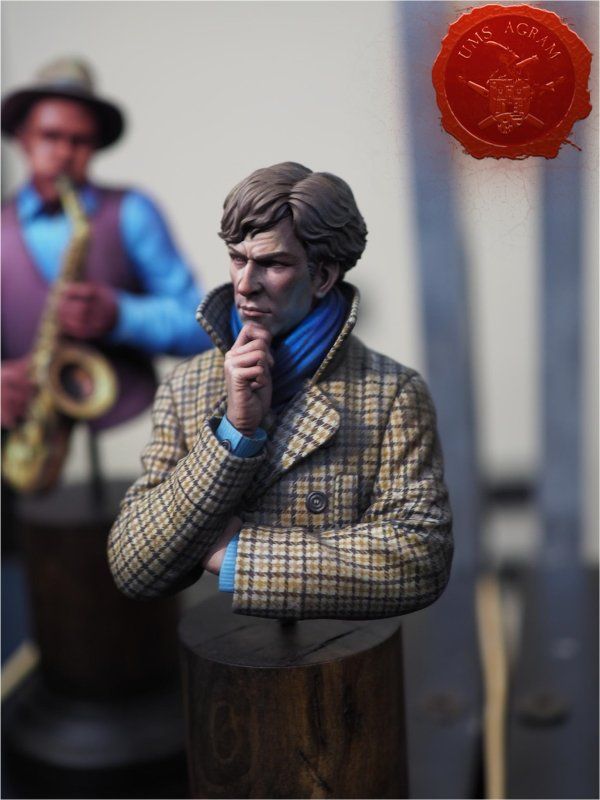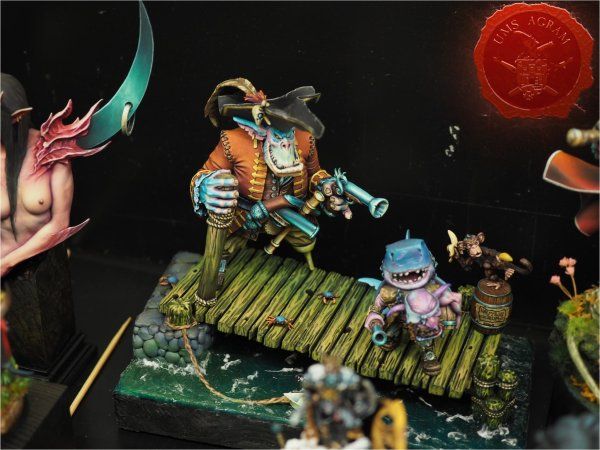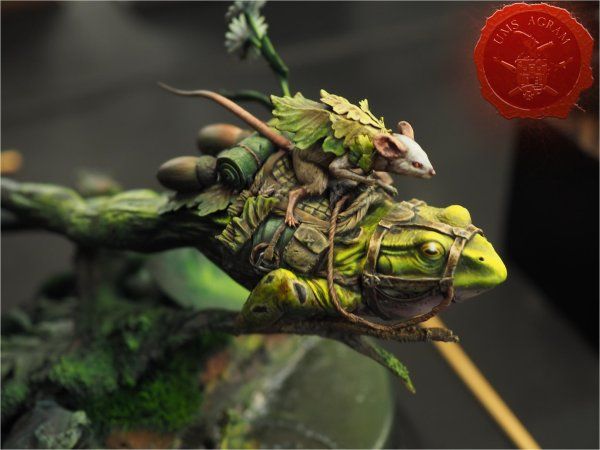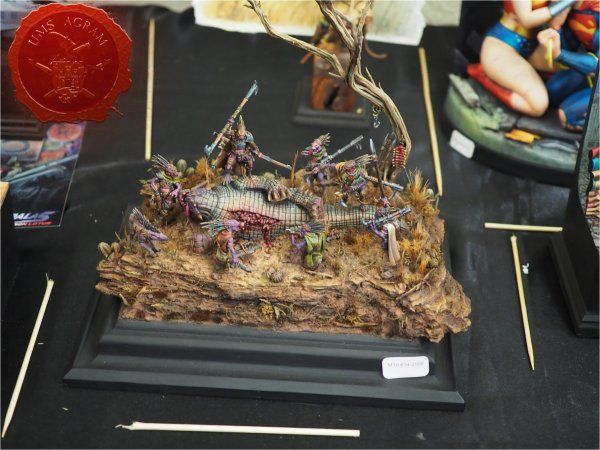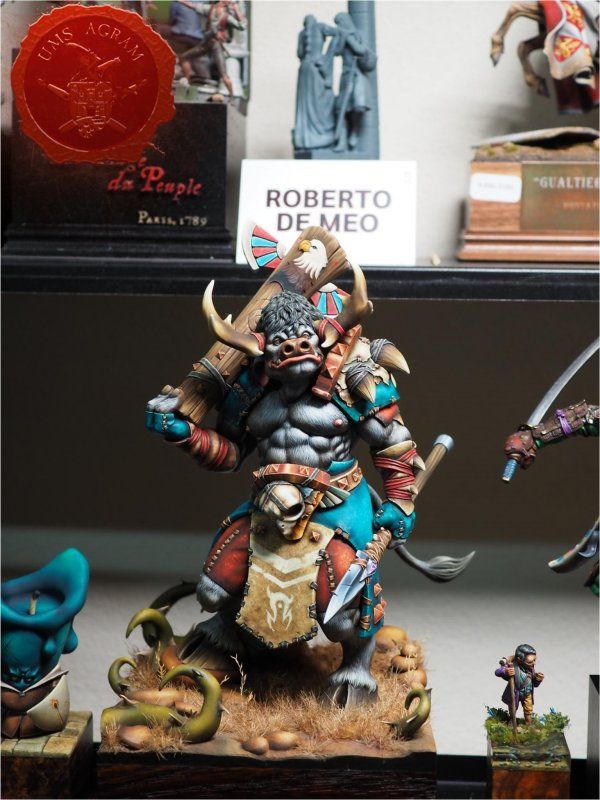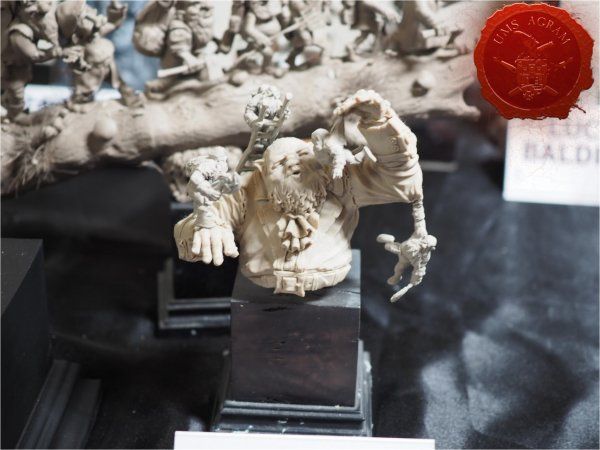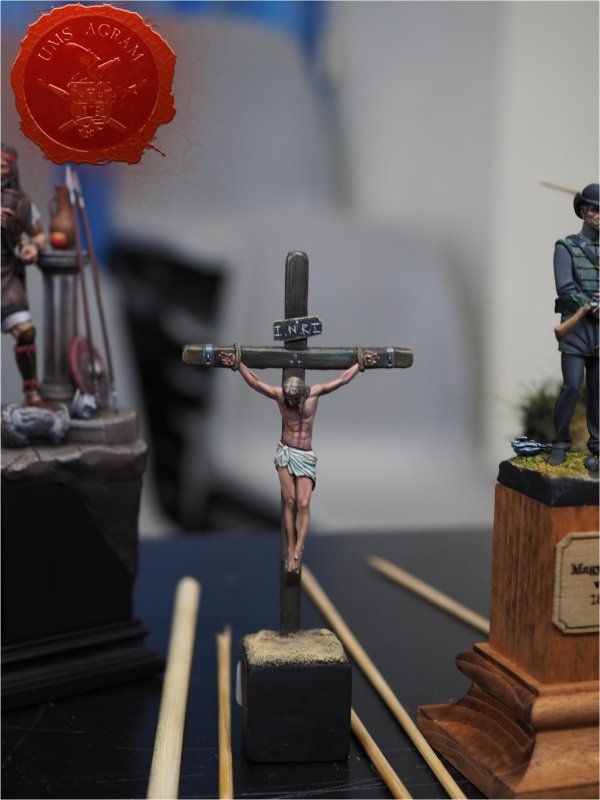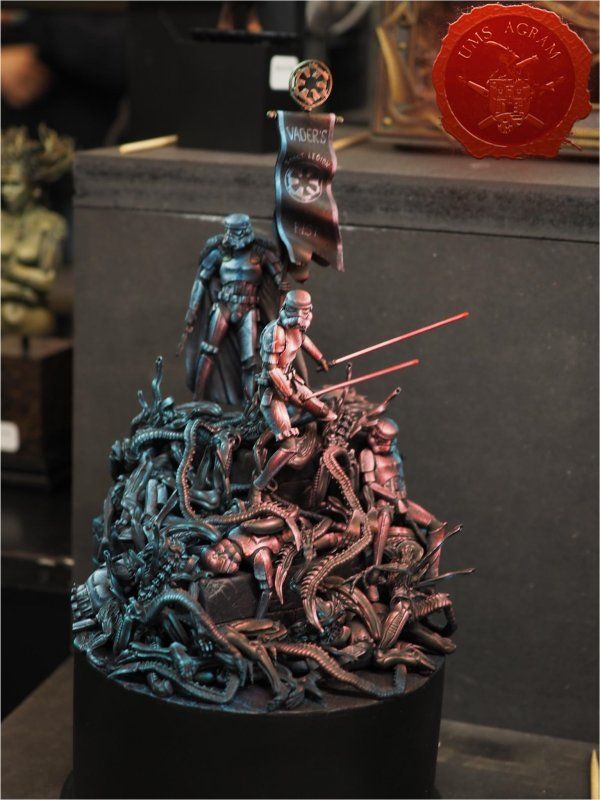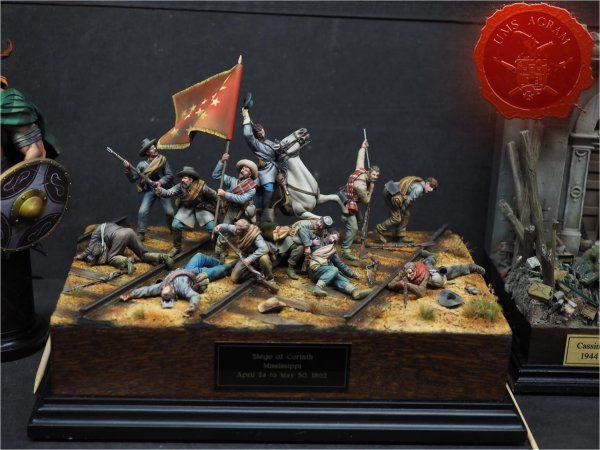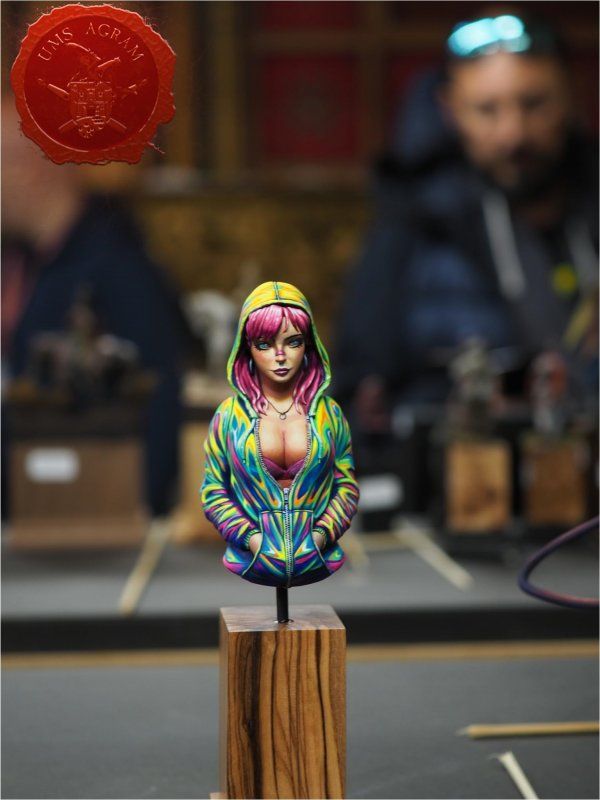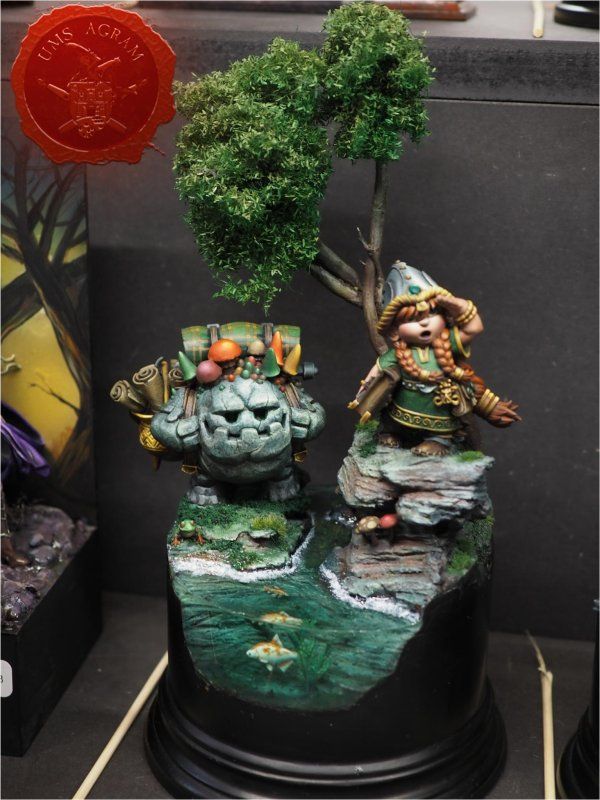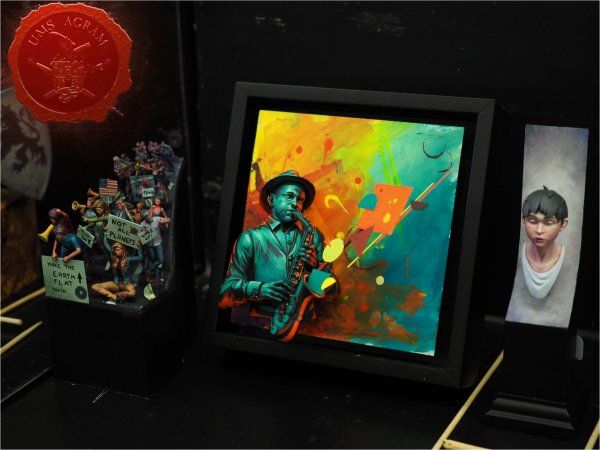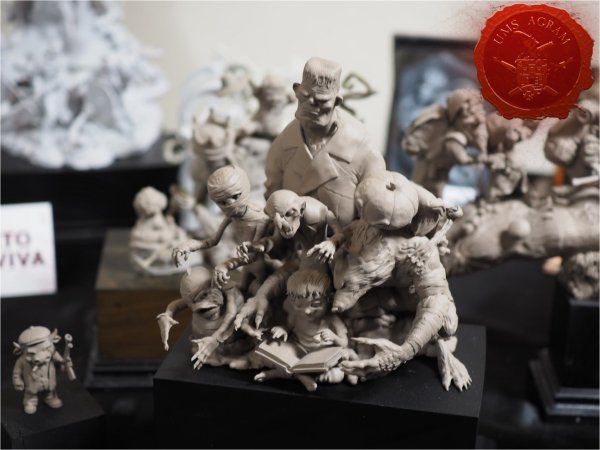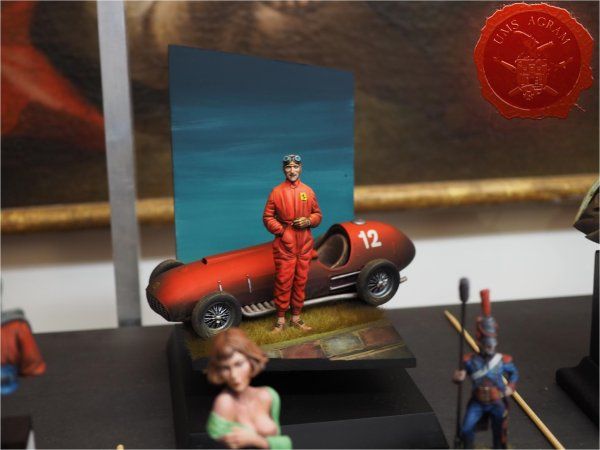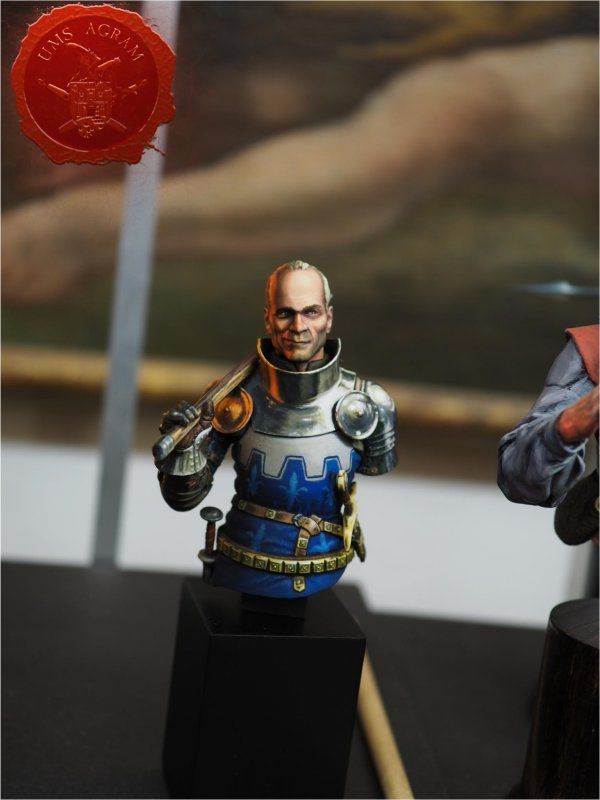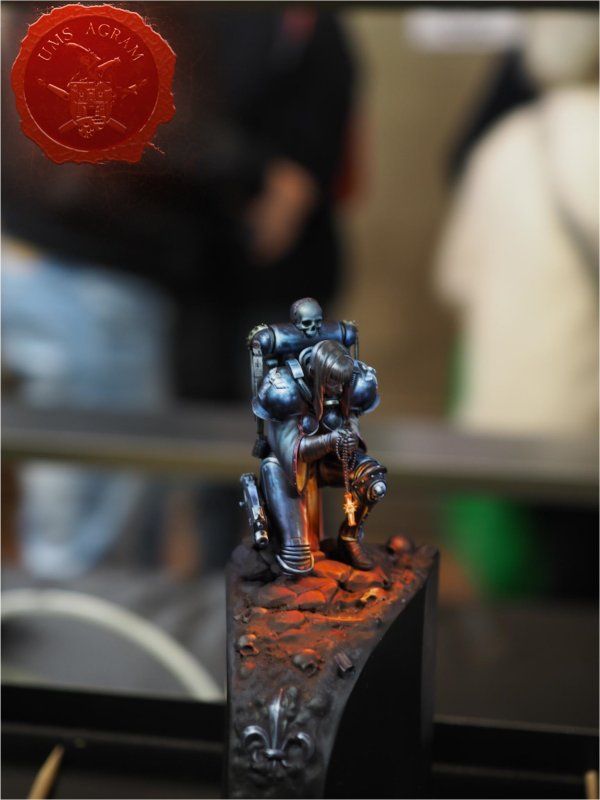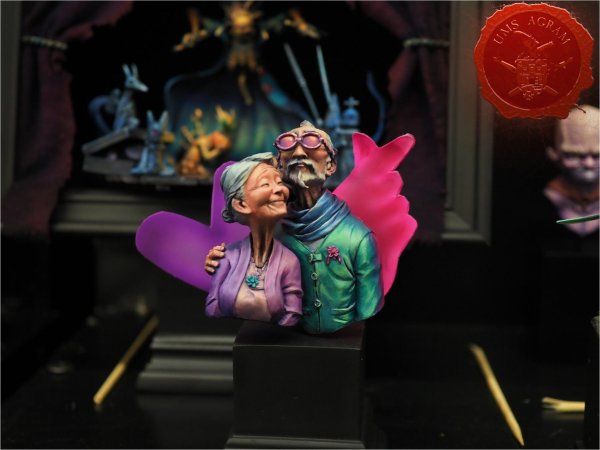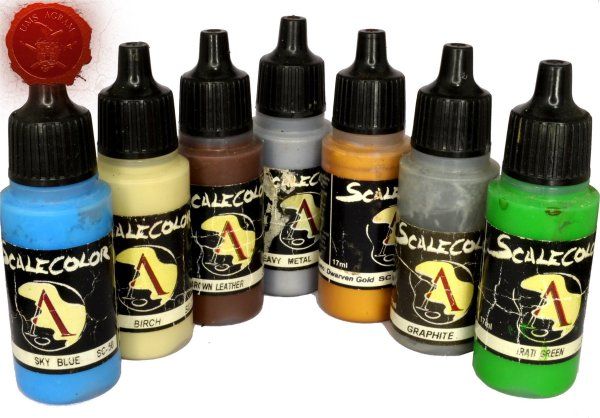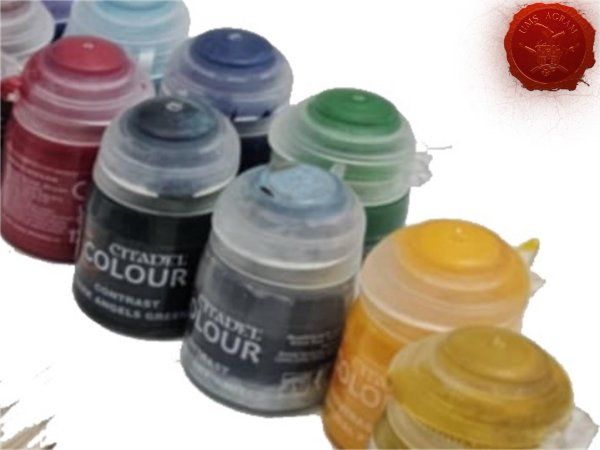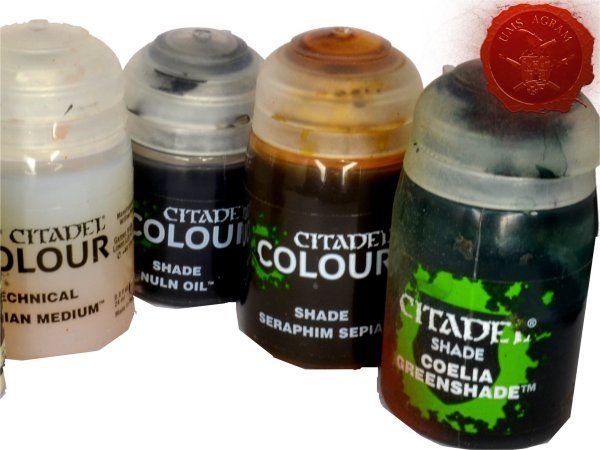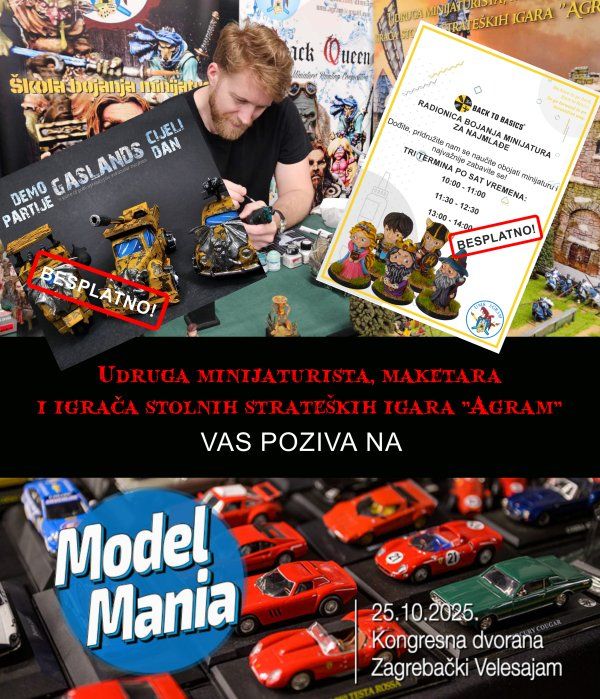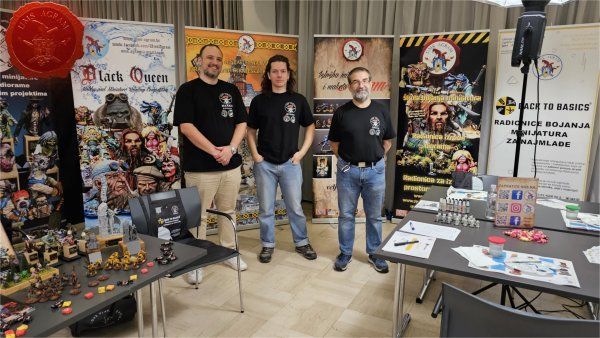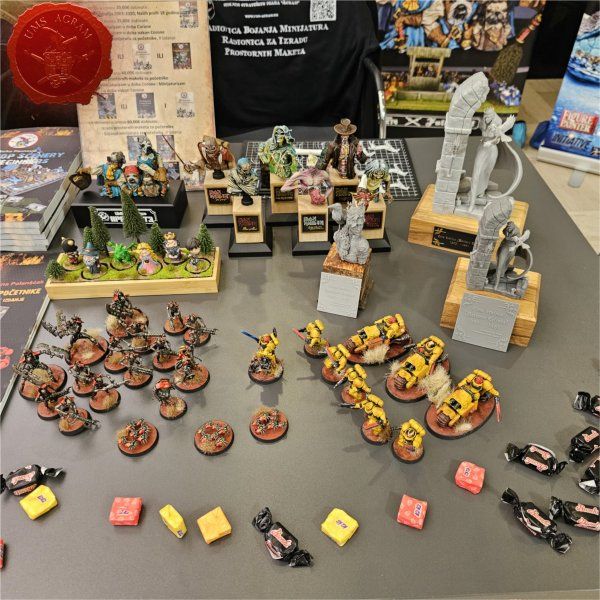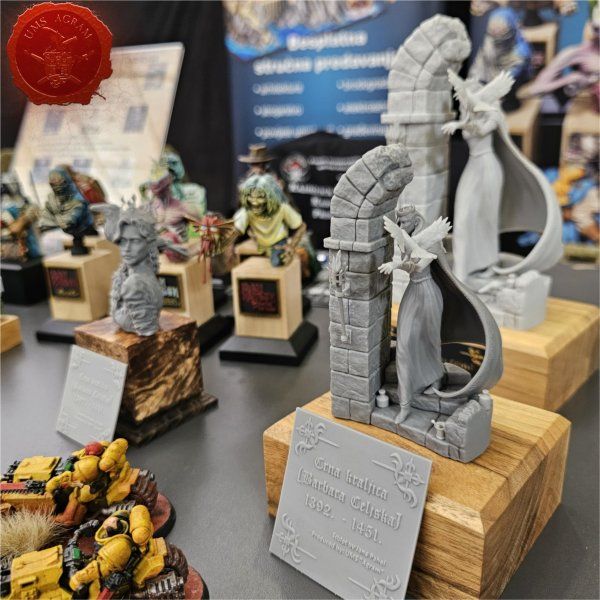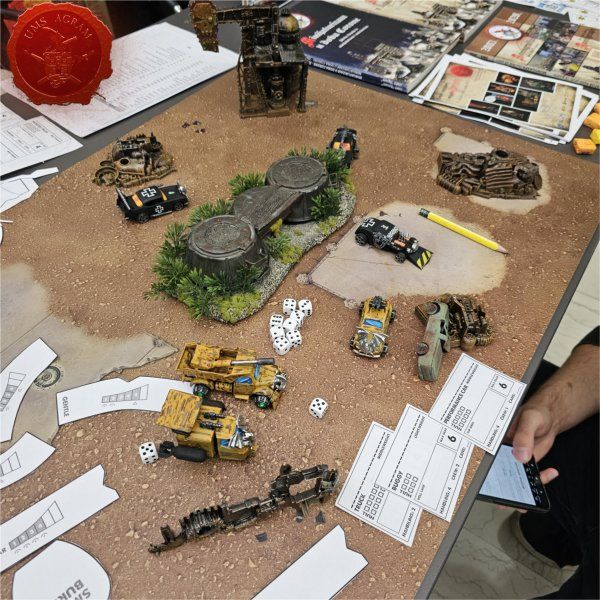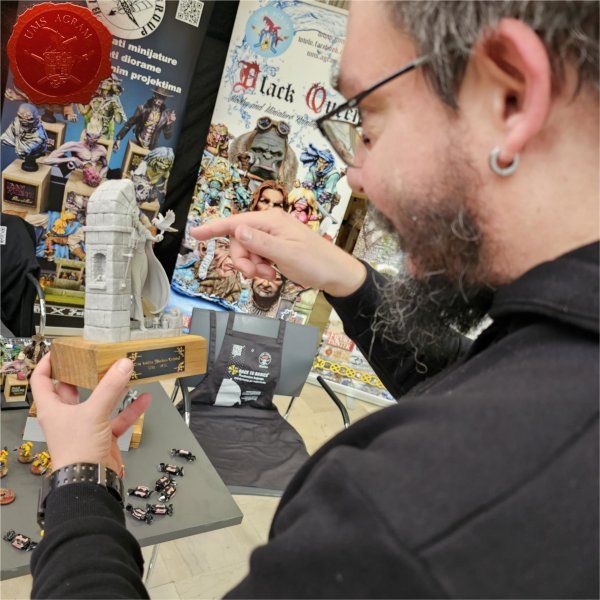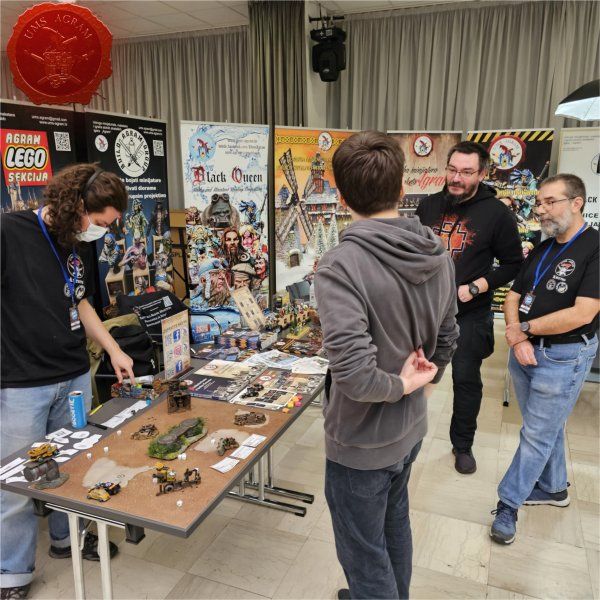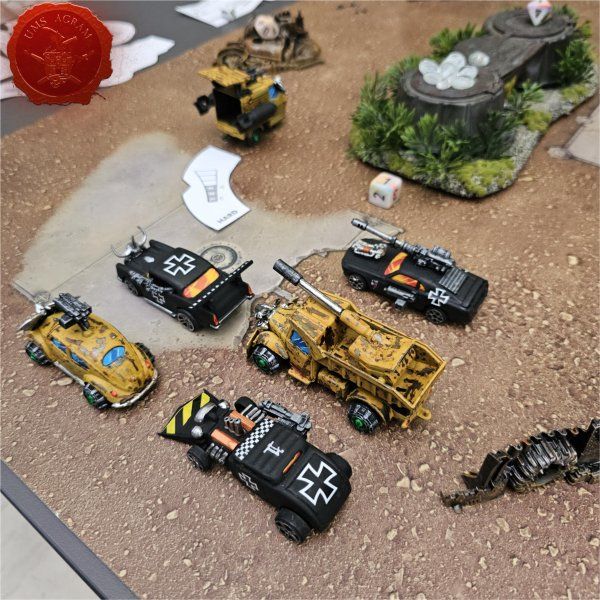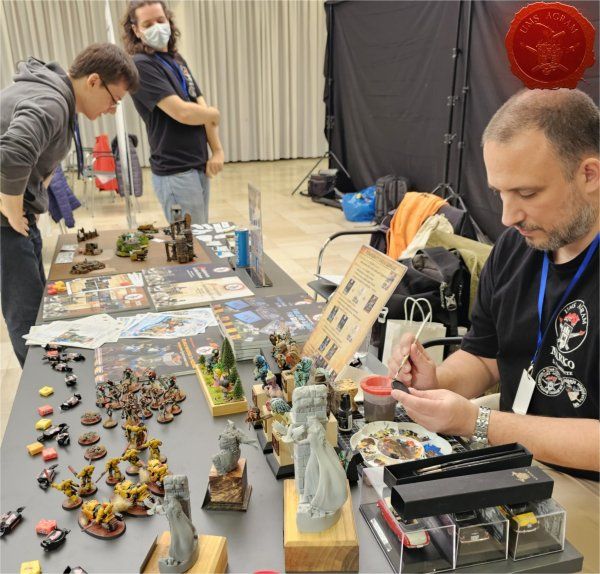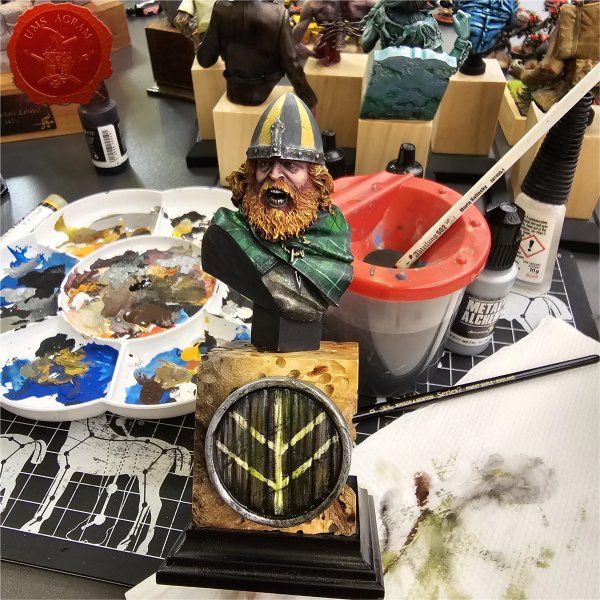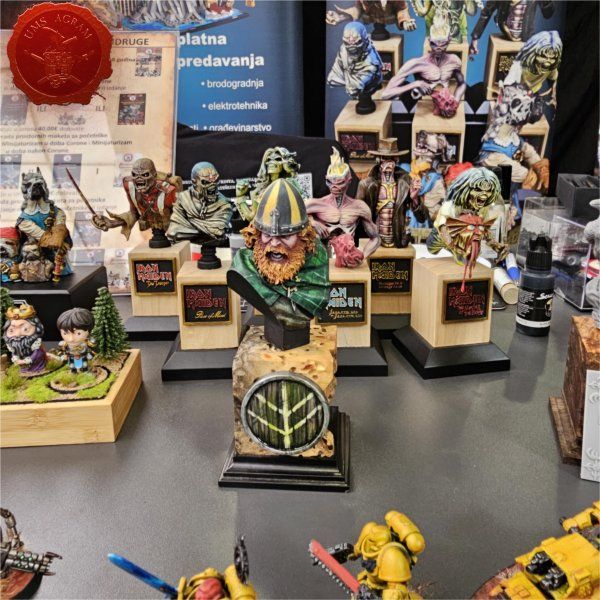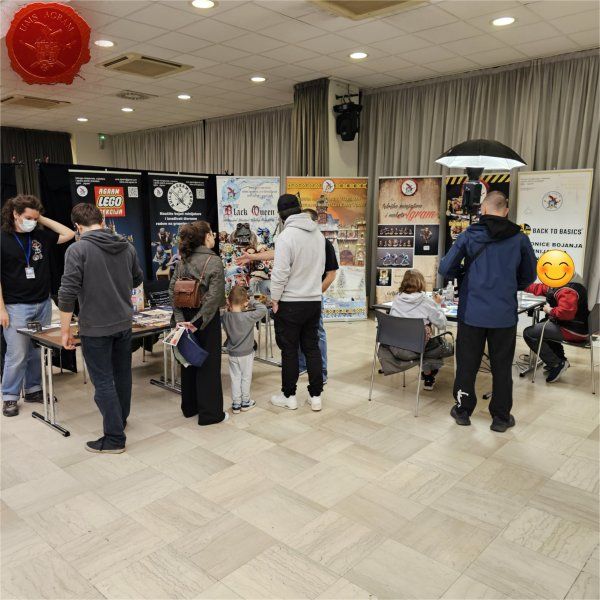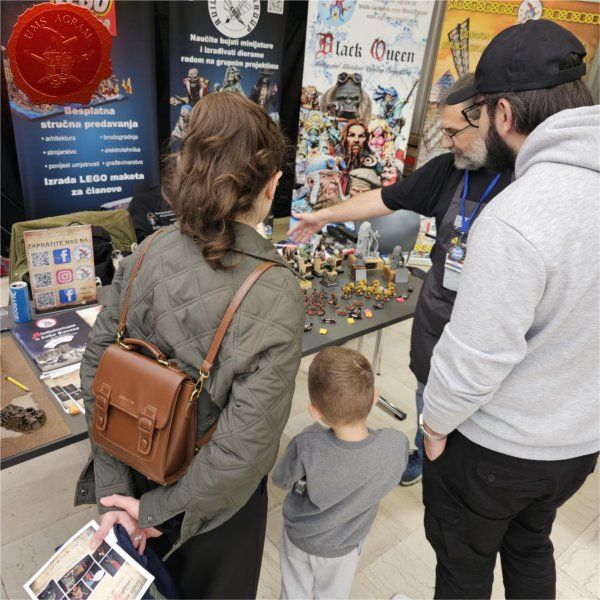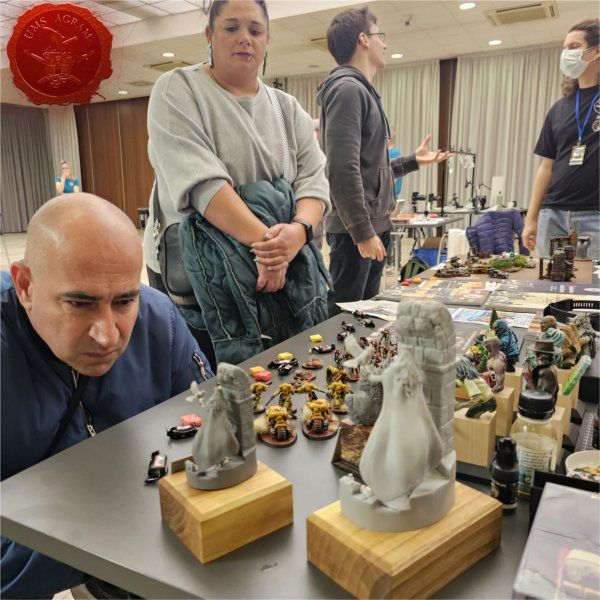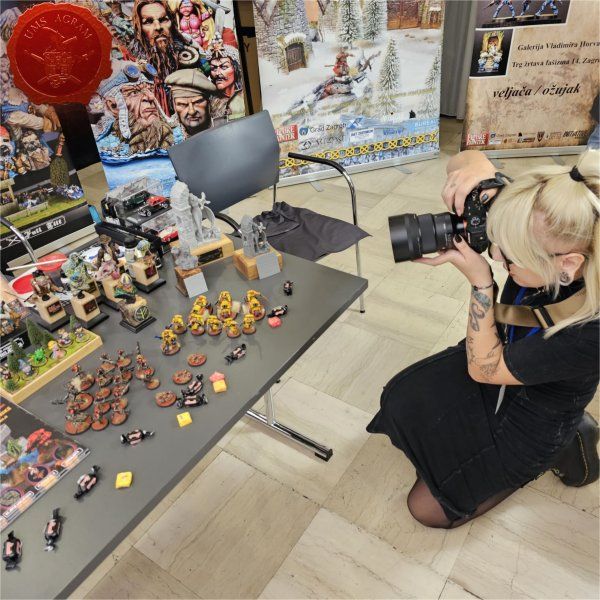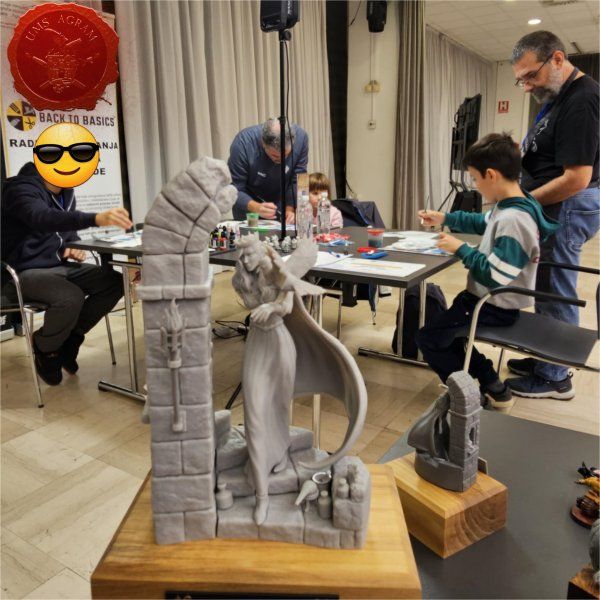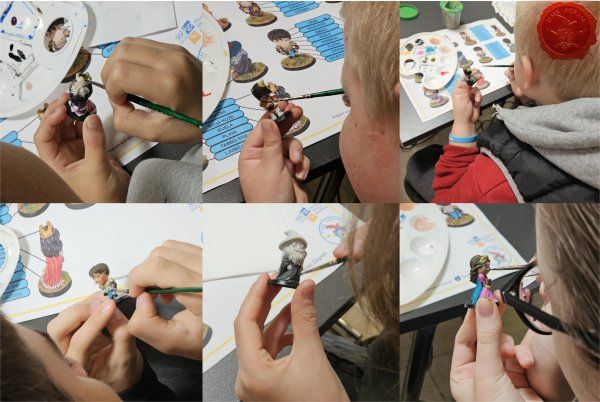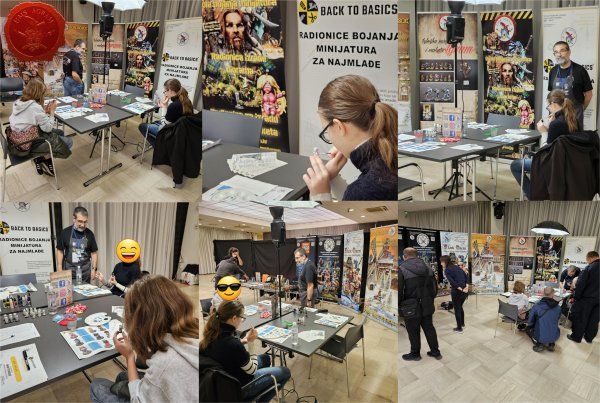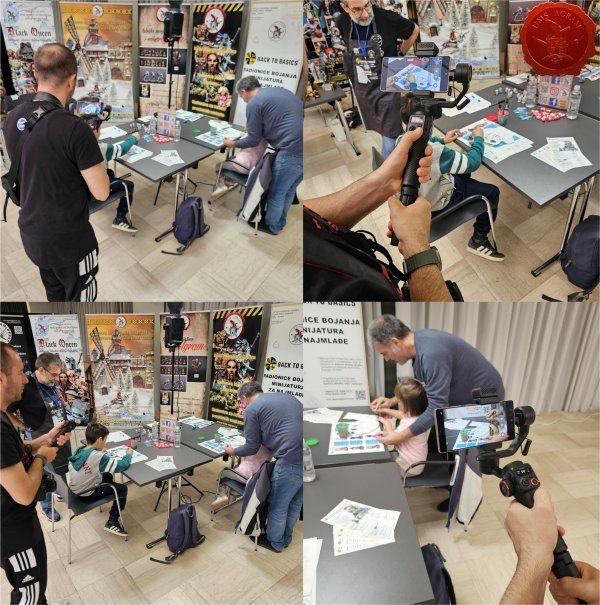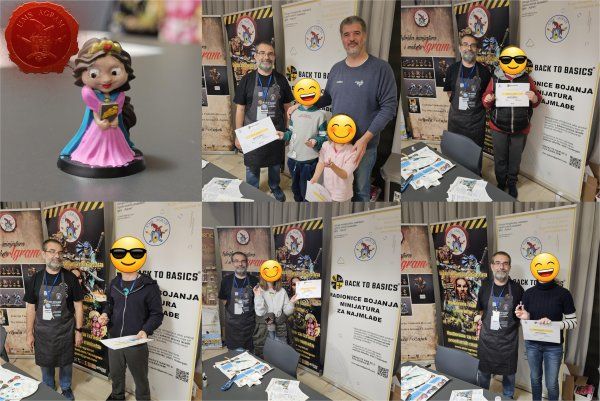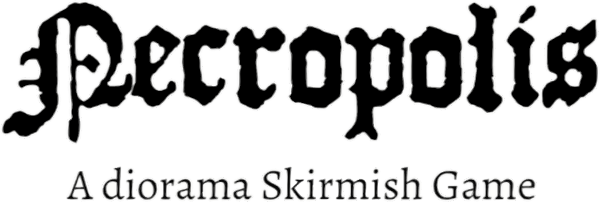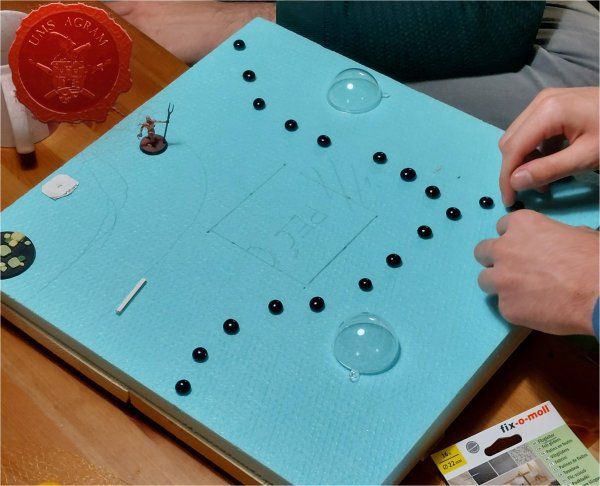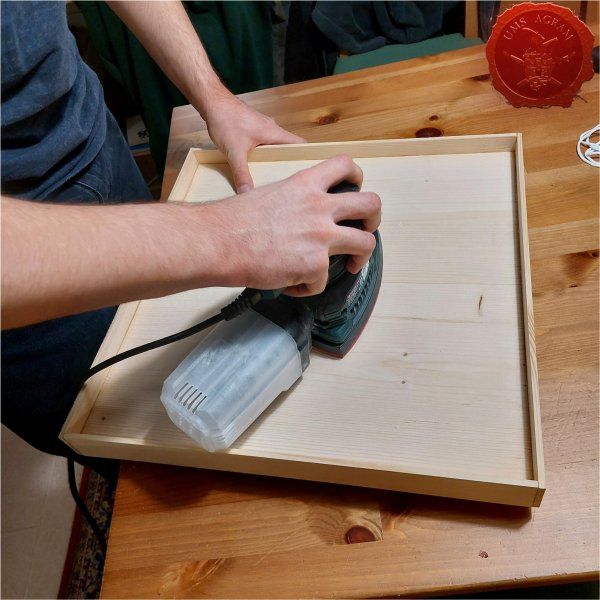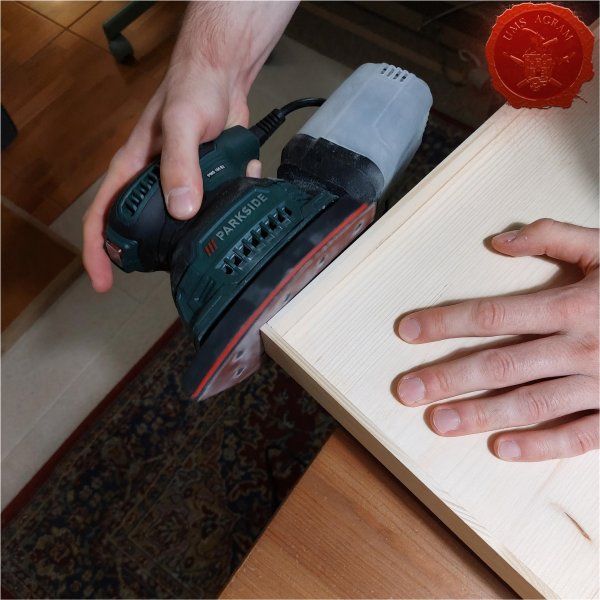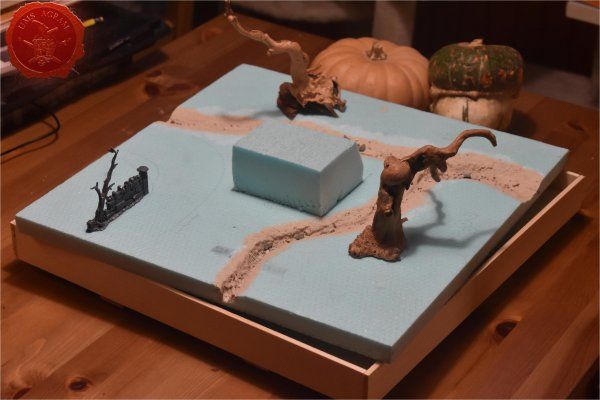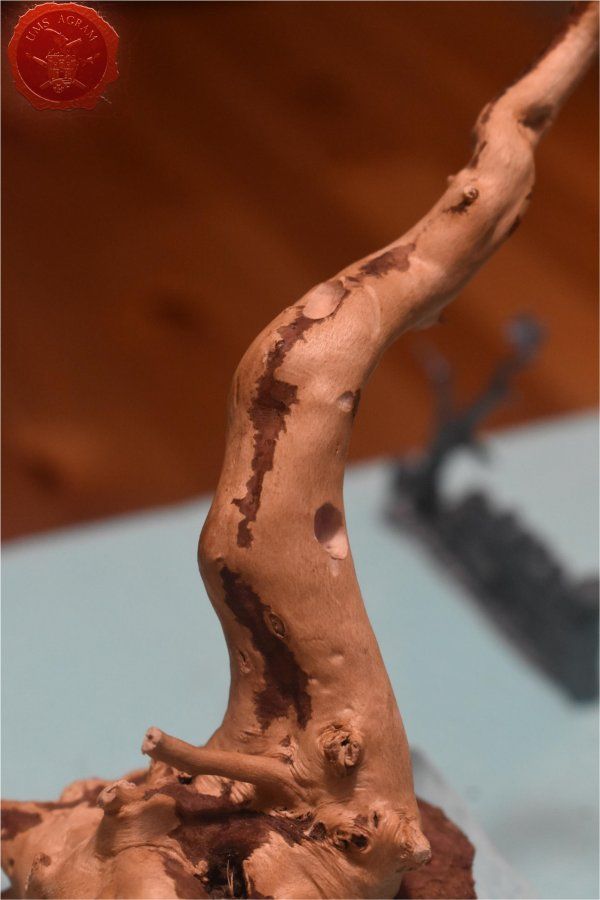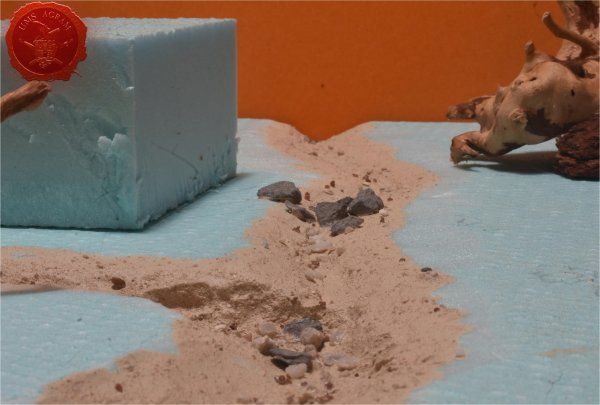Necron Destroyer
On the necron itself, I didn’t perform anything special as far as converting was concerned except adjusting the pose and cutting the left hand holding the rifle. The base is a little more complex. The stone slabs are made of balsa, the barrels are from GW’s 40k accessories sprue, a bit of slime glue, a bit of thick mesh for the fence windows. The light pole is made of Patton 1:35 tank tubes with a combination of Lego bricks, some parts of Apache 1:48 and some other little things.
In the last picture, you can see another feature of this miniature, ie the light pole lamps are bright to point out, or to be precise, the broken lamp hanging on the wires is flashing, and the other whole is just lit. In the vertical barrel there is a 1.5 V LR1 (SN) battery, in the reclining barrel there is a circuit that controls the oscillating diode, and below the "ground" there is a circuit that allows the second diode with a voltage characteristic of 3V to light connected to 1.5V. There is a microswitch on the lighting pole itself, which turns the diodes on and off as desired.
The most common comments on my luminous necron were, "How could you?"
I guess most people are not up to digging on the net and looking for schemes, spending money on electricity. elements, burns from a soldering iron, etc., but in case there is someone interested in adding light effects to their miniatures or a private collection of terrain, here are a few pictures and some useful tips.
To assemble an assembly that allows the LED to light or flash, you need the following elements:
-LED (light emitting diode) of 3V diameter according to your wishes (there are 3mm, 5mm ...)
-electrolytic capacitor of 100 microfarads and 63V
-capacitor depending on the flicker speed you want to achieve (0.01 microfarad gives a flicker frequency of 1Hz, 0.001 microfarads of 10Hz, etc.)
-voltage converter ICL7660 or ICL 7660S (integrated circuit)
-housing for voltage converter
-insulated wire for connecting elements
-1.5 V battery
-tools: pliers cutters, soldering iron, soldering wire, not necessary but sometimes a voltmeter / ammeter comes in handy.
These elements are connected according to the following scheme:
VOLTAGE CONVERTER (ICL 7660 or ICL 7660S):
The first thing to know is how to determine which pin is on the voltage converter - Place it in front of you so that the point / hole on the top of the integrator is on the left. The integrator has eight pins and they go in this order: bottom row from left to right 1-4, top row from right to left 5-8. ()
Another important thing about integrators is that they are very sensitive to high temperatures. Since the soldering iron develops approx. 180-420 C, direct soldering to the integrator pins will probably burn it out. Instead, obtain an integrator housing with eight pin holes and solder everything to the housing pins, and when the soldering is complete, insert the integrator into the housing.
ELECTROLYTIC CAPACITOR (C2):
It has its two legs, one of which is + pole and the other-pole. Minus the pole is marked on the el. capacitor. It is very important to connect it exactly as it is drawn in the diagram, ie + half of the condom on pin 2 of the integrator, and - half of the condo on pin 4 of the integrator. This is important because electrolytic capacitors, unlike ordinary ones, are precharged to a certain voltage (in our case to 63V) and in the case of a wrong connection when they are connected to the power supply, they explode.
CAPACITOR (C1):
Unlike electrolytic ones, ordinary ones are not precharged, they have an air gap and not electrolytes, and it doesn't matter which pin you connect to pin 7 and which to pin 8. Take care only of the oscillation frequency you want to achieve.
LED:
LEDs are semiconductor elements that emit light when they are powered. The advantage of LEDs over light bulbs is that they consume much less electricity and do not burn out. The LED has two electrodes, the anode is longer (+), and the cathode is shorter (-). The anode is connected to the positive pole of the source and the cathode to the negative. In the case of a reverse connection, nothing will most likely happen to the LED, but it will not light up either.
Similar to integrated circuits and LEDs, they are sensitive to high temperatures and can burn out during prolonged soldering. I advise you to stick the pliers to the electrode you are currently soldering (between the tip of the LED and the place you are soldering) when soldering the LEDs. In this way, the pliers will serve you not only to hold but also to dissipate heat.
The diagram still shows an element marked R1 and is drawn intermittently. It’s a photodiode and it serves to keep the LED from shining in daylight - for some sort of battery saving. Feel free to take it out of the circuit, but rather add a switch between pin 3 and the half of the battery so that you can turn off and turn on the LEDs as desired.
This circuit allows the LEDs to vibrate at a certain frequency. If you want your LED to light up constantly, simply remove capacitor C1 from the circuit and connect everything else.
The advantage of this circuit is that it allows the LEDs provided for a 3V power supply to be lit only at 1.5V. This in turn gives a greater choice of suitably small batteries.
In the end for those who put in the effort and read the entire post to the end, this seems harder and more complicated than it really is. I tried to write explanations so that the circuit can be assembled by someone who has no idea what a capacitor is, for example. Honestly, I don't fully understand some things either (what exactly does C2 do in the circle: -k). My point is, if you have never done anything like this, it is still enough to buy the elements and connect them as shown in the picture and to illuminate for example the landing drop for 40k.
Latest articles
- Back to Basics Workshops in Galerija VN, a part of Libraries of Zagreb Krunoslav Belinić, 4th December 2025
- We attended: Monte San Savino 2025 Marko Paunović, 24th November 2025
-
Science behind Acrylic Paints
- Binders (eng. resin) – form a film – in our case probably pure acrylates, I suspect they are styrene acrylates.
- Fillers – in addition to adding volume to the paint, they also affect the viscosity, coverage and appearance of the dry film
- Pigments – the main division is into organic pigments and inorganic pigments. Inorganic ones are more covering but have less vivid shades, while organic ones are often quite poorly covering (yellow for example) but their shades are vivid and bright
Additives:
- Anti-foam
- Rheological modifiers – affect the behavior of wet paint on the substrate (e.g. spillage) and the behavior of the paint when a force is applied to it (brush, roller, spray, airbrush). Rheological modifiers also include thickeners that affect the viscosity of the paint.
- Dispersants – envelop pigment and filler particles and prevent their agglomeration during standing. Good dispersion of pigment and filler affects the coverage and uniform appearance of the dry film. There are a bunch more but I won't go into too much detail
- Solvent – in this case water.
Contrast paints and speed paints – high pigment content, but not so much that it causes high coverage. They are formulated to spread, not to stay where you put them. The result of spreading is that the paint collects in the recesses, where a thicker film of paint remains than on the protruding parts of the miniature. Where the film of paint is thicker (the recesses), the shade of the contrast paint is more pronounced, unlike on the protruding parts where the film is thinner, which is why the shade is then influenced by the color of the substrate.
Composition:
- Binders
- Pigments
- Additives – all listed above + surfactants that reduce the surface tension of the wet paint film, which is why it flows
- solvent
- I would say they do not contain fillers, or contain very, very little of them
Washes – similar in formulation and behavior to contrast agents, only they have a much lower proportion of pigments, certainly no fillers, a higher proportion of surfactants, lower viscosity, and probably less binders.
If we want to greatly dilute acrylic paint or contrast, it is better to use a product intended for this purpose from the manufacturer of that paint rather than water, because it contains all the necessary amount of binders and additives for that paint to retain its properties.
" ["content_hrv"]=> string(4306) "U ovom članku, naša Dunja nam otkriva znanost iza akrilnih boja.
Akrilne boje – visoki udio pigmenta i dobra pokrivnost. Ako su dobro formulirane ostaju tamo gdje ih naneseš, ne ostavljaju „brush marks“ i suše se dovoljno sporo da stigneš napravit što želiš na minijaturi a opet dovoljno brzo.
Sastav:
- Veziva (eng. resin) – formiraju film – u našem slučaju vjerojatno čisti akrilati, sumnjam da su stiren akrilati.
- Punila – osim što dodaju volumen boji utječu i na viskoznost, pokrivnost i izgled suhog filma
- Pigmenti – glavna podjela je na organske pigmente i anorganske pigmente. Anorganski su više pokrivni ali manje živih nijansi, dok su organski često dosta loše pokrivni (žuti npr) ali zato su im nijanse žive i jarke
Aditivi:
- Protiv pjene
- Reološki modifikatori – utječu na ponašanje mokre boje na podlozi (npr razlijevanje) i na ponašanje boje dok na nju djeluje sila (kist, valjak, sprej, airbrush). Pod reološke modifikatore spadaju i ugušćivači koji utječu na viskozitet boje.
- Dispergatori – obavijaju čestice pigmenata i punila i sprječavaju aglomeraciju istih stajanjem. Dobra dispergiranost pigmenta i punila utječe na pokrivnost i ujednačen izgled suhog filma.
- Ima ih još hrpa ali neću toliko u detalje
- Otapalo – u ovom slučaju voda.
Kontrastice i speed paints – visoki udio pigmenta, ali ne toliki da uzrokuje visoku pokrivnost. Formulirane su da se razlijevaju, a ne da ostaju tamo gdje ih staviš. Posljedica razlijevanja je skupljanje boje u udubine gdje onda ostane deblji film boje nego na isturenim dijelovima minijature. Tamo gdje je film boje deblji (udubine) nijansa kontrastice izraženija, za razliku od isturenih dijelova na kojima je film tanji zbog čega na nijansu onda utječe boja podloge.
Sastav:
- Veziva
- Pigmenti
- Aditivi – svi nabrojani gore +
- surfakanti koji smanjuju površinsku napetost mokrog filma boje zbog čega i dolazi do razlijevanja
- otapalo
- rekla bih da ne sadrže punila, ili ih sadrže vrlo vrlo malo
Washevi – po principu formuliranja i ponašanju slični kontrasticama, samo imaju puno manji udio pigmenata, sigurno ne sadrže punila, veći udio surfakanata, manji viskozitet i vjerojatno manje veziva.
Ako želimo jako razrijediti akrilnu boju ili kontrasticu bolje je koristiti za to predviđen proizvod od proizvođača te boje nego vodu, jer sadrži svu potrebnu količinu veziva i aditiva kako bi ta boja zadržala svoja svojstva.
" ["created"]=> string(19) "2025-11-20 13:03:37" ["modified"]=> string(19) "2025-11-20 13:03:37" } ["Member"]=> array(10) { ["id"]=> string(2) "64" ["group_id"]=> string(1) "1" ["first_name"]=> string(9) "Krunoslav" ["last_name"]=> string(8) "Belinić" ["first_name_mask"]=> string(9) "krunoslav" ["last_name_mask"]=> string(7) "belinic" ["username"]=> string(5) "Kruno" ["password"]=> string(40) "eb3fda45fbec0258e90d809803b10491c548b22f" ["born"]=> string(19) "2015-01-18 09:19:00" ["created"]=> string(19) "2015-01-18 09:20:39" } } Krunoslav Belinić, 20th November 2025 - We attended: ModelMania 2025 Marko Paunović, 5th November 2025
- Necropolis Board part 1 Antoni Pastuović, 5th November 2025
Latest battle-reports
- Kill Team - Blooded vs. Vespid Stingwings 28th February 2025, GW - Warhammer 40.000, and Antoni Pastuović (Imperial Guard)
- 22nd April 2022, GW - Warhammer 40.000, Borna Pleše (Space Marines) and Kristijan Kliska (Tau Empire)
- 17th November 2021, GW - Warhammer 40.000, and Nino Marasović (Space Marines)

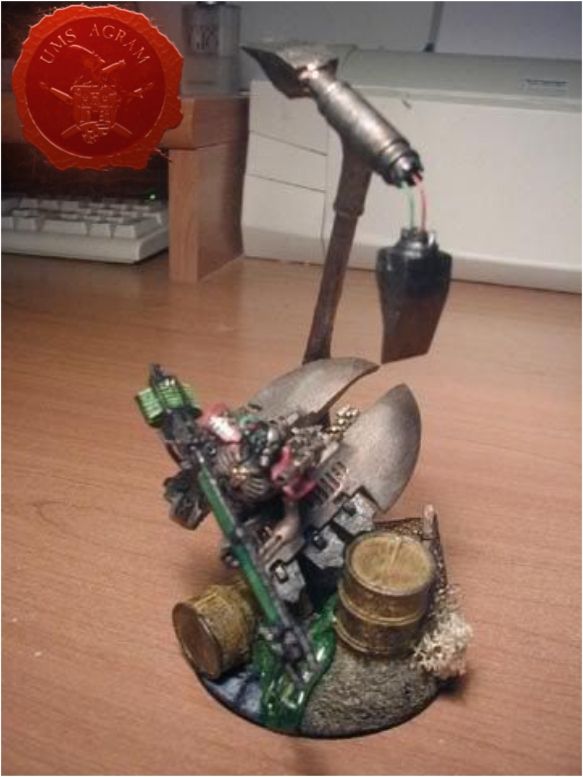
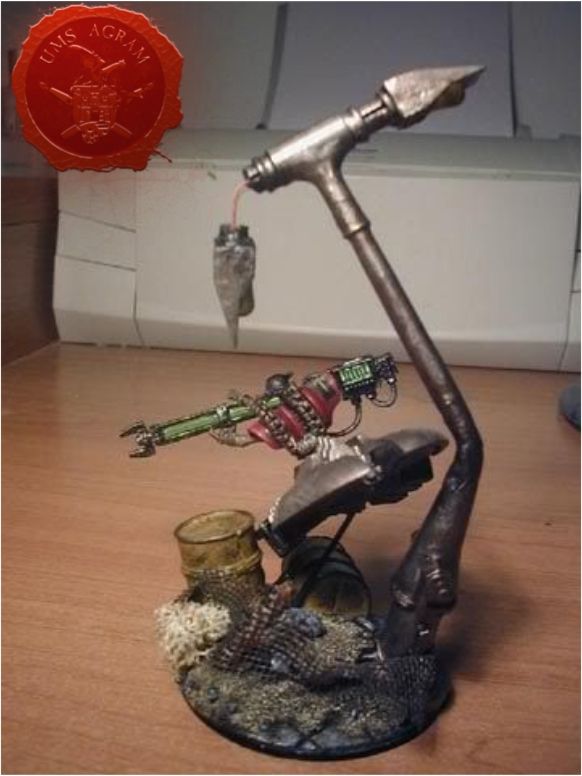

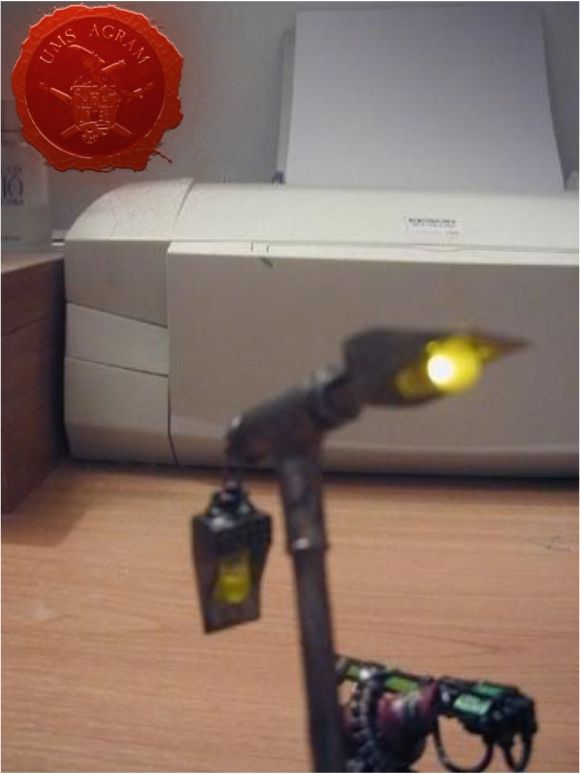
.jpg
)
